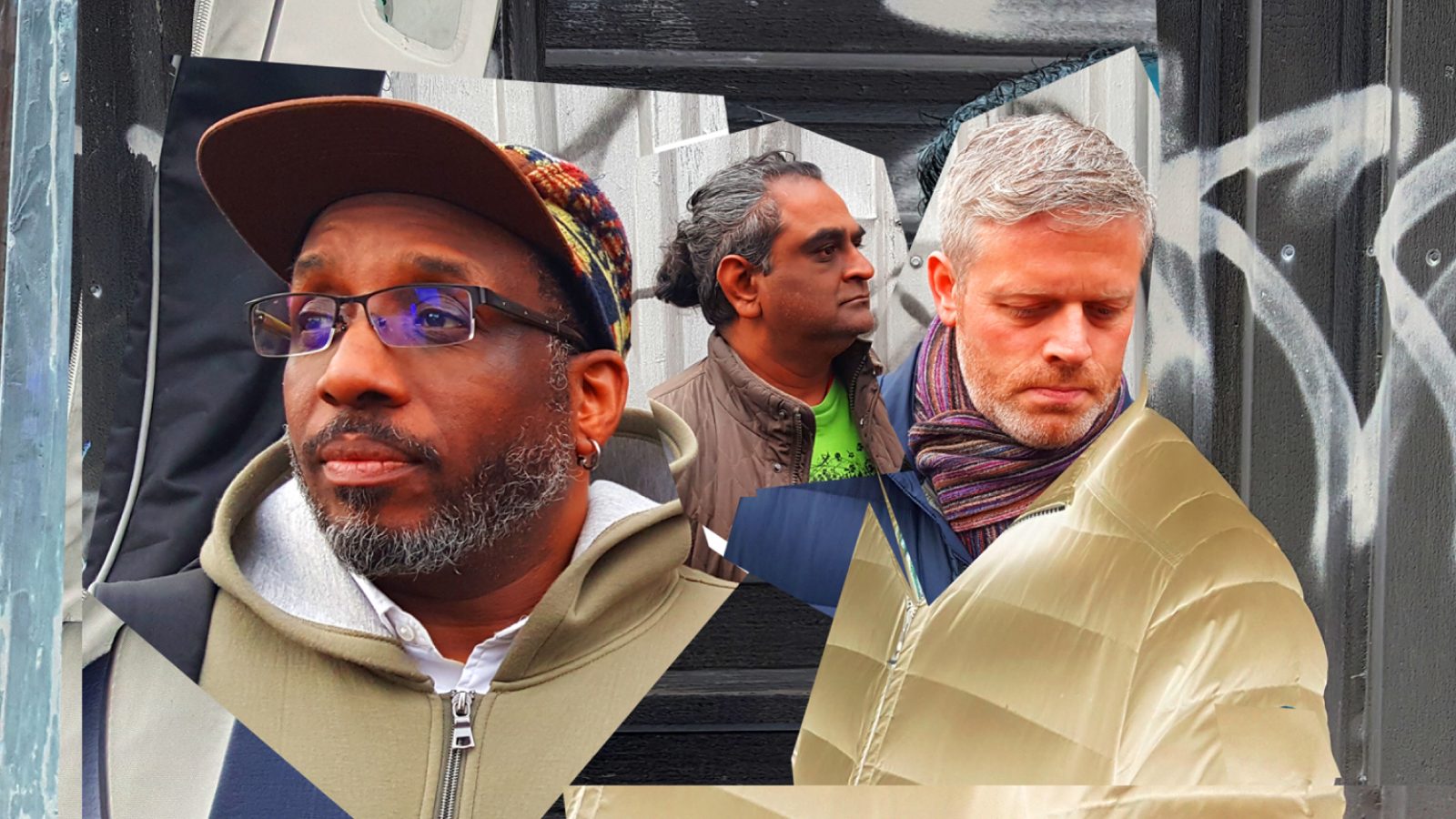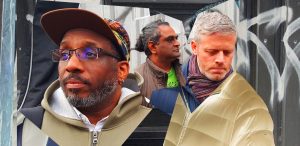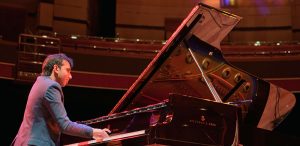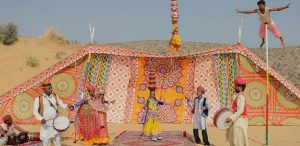
The New North and South programme has enabled inspiring performances to take place throughout Greater Manchester during the past five months. From recitals of Indian classical music to the live soundtracking of cutting edge French cinema – it has highlighted a breadth of music and in doing so reflected the importance of cultural exchange between the U.K. and South Asia. Forthcoming commission Electronic Empires: Shapes, Sounds and Signs of things to come, looks set to be #NewNorthSouth’s most ambitious and immersive celebration of shared musical heritage so far.
Representing a reawakening of cultural ideas born prior to the internet age in Greater Manchester – it builds upon the legacy of premillennial projects such as Session 72 and the 1999 Sister India tour. Documented by filmmaker Howard Walmsley, Session 72 was a collaborative residency that emphasised digital technology and ethnic diversity. Led by Graham Massey and Nitin Sawhney at Contact theatre – it featured several of the creative individuals who contribute to this new project. Visual wizard Nick Wallbank – whose work has been in use at Glastonbury Festival, the Tate Gallery and Venice Architectural Biennale – reunites with core band members Clive Hunte, Jaydev Mistry and Glenn Sharp for the first time in twenty years on this project. Renowned, Berlin-based tabla player Renu Hossain and exceptional violinist Jote Osahn were part of the Sister India tour and have since worked with artists such as Grace Jones and Massive Attack respectively. Alongside fellow soloists Olivia Moore, Jasdeep Degun Singh, Shunya and Denis Jones, they promise to make this an awe-inspiring, multi-sensory experience.
The commission features new sound design and live arrangements, graphic art and cinematography from Stark Mammals, Soulanaut, Gawain Forster and Chris Drury of Fingathing – each contributing to Nick’s construction of an ‘electronic empire’. Ahead of the performance, we spoke to Glenn and Clive about the challenges the project has posed and what people can expect to hear when it premieres on Thursday 22nd March at Band on the Wall.
Being that Electronic Empires is an entirely new commission, can you give us a potted history of it – from the germination of the concept to how it will be presented to the audience in its complete form?
GS: ‘I met up with the producer at a gig and got talking about the old days, in particular our work on Session 72, back in the ‘90s. This new commission was then presented to me. After a few jam sessions at Band on the Wall, we ended up with a dozen or so ideas. These were taken back to our studios to be refined, our guest musicians hired, visual designers on-board and we’re ready to go.’
The rehearsal snippets we’ve heard thus far sound fantastic, but what have been the most challenging aspects of pre-production?
CH: ‘Time!! Coordination between guest musicians that I’d recommended via phone calls, emails and Facebook messenger. At one stage, I thought getting some of them on board might be difficult but it worked out in the end, apart from drummer Myke Wilson who’s playing with Corinne Bailey Rae in South Africa on the same day as our gig.’
GS: ‘For me the biggest challenge lies in combining the work from our studios with the live performers, getting the right balance sonically. But this all changed after we got our string players in. Everything just came together.’
Left to Right: Clive Hunte, Jaydev Mistry and Jasdeep Degun Singh rehearsing at Band on the Wall (credit Glenn Sharp)
You have some tremendous soloists joining the core band for the performance, including Denis Jones and tabla player Renu Hossain. How and when did you approach these individuals about becoming involved and were their roles and musical parts predetermined, or have they been able to contribute to the music and to the parts they specifically play?
CH: ‘I met Denis Jones on a similar project lead by Nitin Sawhney and we became mates. I met Renu when she was still living in London. I was asked to play bass for the band Mezzowave that Renu also featured in and we did a showcase concert for a record label. many years later she sent me a private message on facebook asking if i could help out on her album ‘dancing in the dark.’
GS: ‘We have had to write parts for them to get things started, but have remained open to all ideas from everyone. All the players will have their own space at certain parts of the performance.’
Renu Hossain’s tabla and percussion setup during an early rehearsal (credit Glenn Sharp)
You’ve also a string section, including Jote Osahn and Alan Keary aka. Shunya among others. What has the chamber ensemble brought to the music and furthermore how important has Manchester’s musical network been in getting these tremendous individuals together in one room and to share one stage?
GS: ‘Bringing these string players together has been great. As they are all soloists with their own unique styles, the overall sound is more dynamic, more free.’
CH: ‘I’ve always loved strings and it was my mission to include them. I knew Alan from a music project I filmed for Brighter Sound.’
If you had to liken the music of this commission to one established album, what might it be and why?
GS: ‘I’d never say it’s like this or that artist. But, I can tell you it will have big glitchy electronic beats, heavy bass, smooth strings, with musical references from old and new Manchester and India.’
CH: ‘Right now it’s hard to pigeon hole as it cross-references so many albums, not just one. But my influences before actually contributing to the project were watching duo Filestine & Nova at Womex Festival in Cardiff, back in 2012. Two people making such a big sound using electronic beats, analogue synths and various other electronic gadgets. So even though i’m playing bass, you’ll see me playing analogue synth during the gig.’
‘Visceral, futuristic, asian, mancunian’ a mood board sets the tone during rehearsal (credit Glenn Sharp)
There’s an array of technology and instrumentation involved in the performance: from your audio software and laptops to your synths, acoustic instruments and programming to project your visuals. What pieces of kit are most vital to the production and what are the most unusual or uncommon instruments in use, either live or as samples?
CH: ‘Everything, including my magic ring! (Come to the gig and you’ll see it in action).’
GS: ‘Yes, there are the usual laptops and synths etc., but also some new technologies custom made by some of the artists. Combined with sitar, tabla, strings and guitars.’
A synth, laptop and mixer forming part of the overall setup (credit Glenn Sharp)








